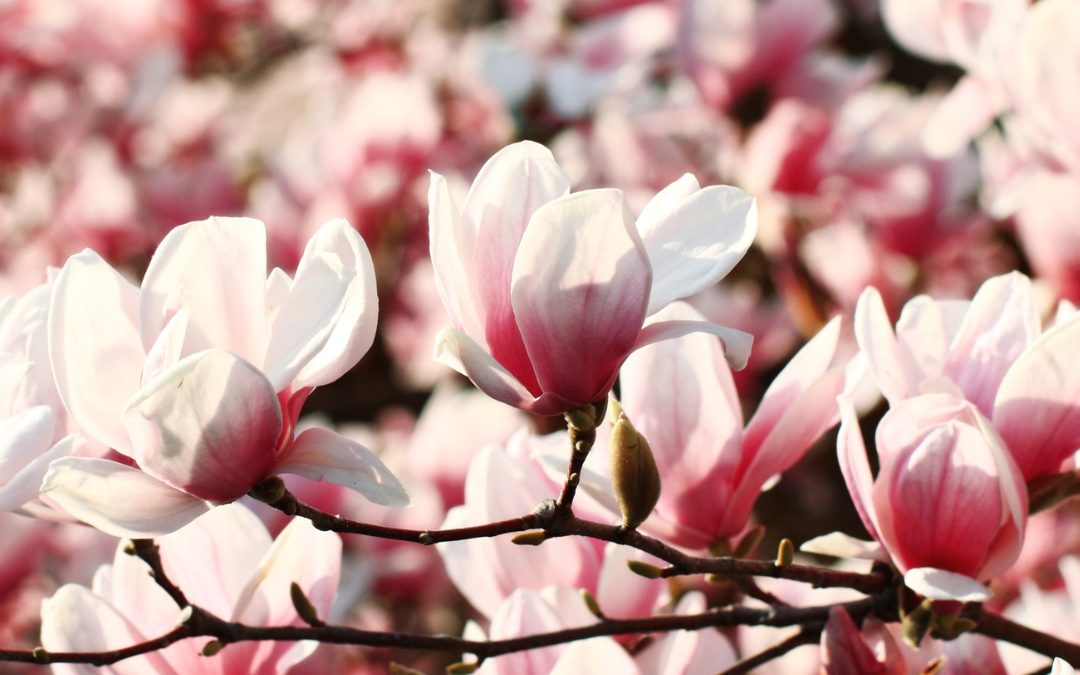Magnolias add a burst of blooms to any landscape with their giant pedals in various shades of white and pink. Magnolia trees can range enormously in height; with a lifespan of 80-120 years, they can reach anywhere from 8ft to 60ft! This makes magnolia trees ideal for yards, as they come in all shapes and sizes. No matter how limited or expansive the space is, there’s a type of magnolia tree to fit your needs. In this blog, we’ll go over what it takes to grow a Magnolia tree of your own this Spring.

When to Plant Magnolias
If you’re in a cold climate, the best time to plant magnolias is in early Spring. However, if you find magnolias available at your garden centre anytime throughout the year, it’s acceptable to go ahead and plant them. Evergreen magnolias are especially recommended for growth during this time as long as the soil is workable.
Magnolia Spacing
Magnolias require ample space to thrive and should stay put once planted. It’s best to keep the area beneath them clear of anything else as their falling leaves can smother plants, although they will decompose and act as a natural mulch that provides essential nutrients for the tree.
Planting Magnolias
Magnolia trees prefer well-drained, nutrient-rich soil such as sandy, loamy or clay. When planting, consider the depth of its roots – which makes them vulnerable to damage caused by foot traffic and heavy soil compaction. Mulching can help keep the roots cool, especially in the early years after they are planted.

Magnolia Sunlight
Regarding light requirements, evergreen varieties need full sun, while deciduous ones require some partial shade. Magnolias generally prefer full sun for optimal growth, but in areas with extreme heat or dryness, some shade is necessary to protect them from the intense afternoon sun.
Watering Magnolias
After planting, providing your new tree with enough water is essential. Depending on the climate, watering should occur 2-3 times per week during cooler months and then once weekly throughout the growing season. For watering, use 2-3 gallons per inch of trunk diameter (3.0-4.4 litres per cm).
Tip: Although magnolia seeds and leaves aren’t toxic, they are not meant to be eaten. If your pet does consume parts of the tree, keep an eye out for any signs of indigestion or discomfort and seek advice from your vet.

Magnolia trees are a fantastic specimen, combining breathtaking flowers with lustrous foliage and an irresistible fragrance. Their unparalleled beauty and aroma can bring complete serenity to your garden. Now that you know how to plant your very own, all there is left to do is choose your favourite one!


